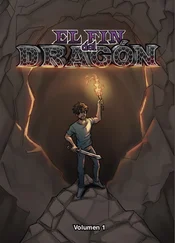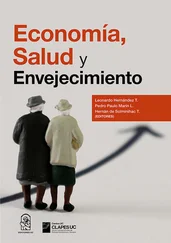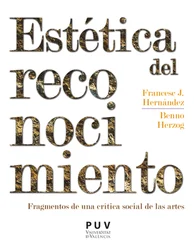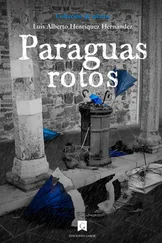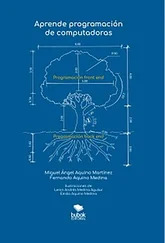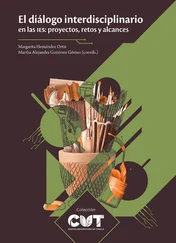There was something theatrical about the declarations of sorrow about Mario’s illness that took place at the school. He had been pulled out of classes to undergo a series of tests, and the vast majority of his classmates turned his absence into an almost sacred matter. It was best not to mention it directly, just in case certain words could awaken the latent possibilities. In any case, his illness created an infinite series of codes and alternate language through which they could show, above all, their fear and disbelief. Such messages were difficult to decode for those of us on the outside of that tragic and sorrowful group.
Berta’s teacher asked me to meet with her again. I supposed that the main topic of conversation would be Mario and the different strategies the students had come up with to cope with this setback. As far as I knew, nothing like this had happened at the school before. I wasn’t wrong. To begin with, the teacher brought me into the strange and sad environment that had overtaken the school. All the students, and all the teachers, too, were having a terrible time with it, but the staff were particularly concerned for Berta, because she was one of those closest to Mario. She said this in a way that made it seem like there was some risk Mario’s illness was contagious. She asked me how Berta was behaving at home and showed great surprise when I told her that she was ‘normal’.
‘What do you mean, normal?’
‘The same as always. Have you noticed anything different?’
The teacher furrowed her brow and gave a start as if a shiver had just run down her spine. That’s when I realised that this woman and I, who must have been about the same age, had always spoken to each other formally, as if we were complete strangers. This seemed like an important detail. I’ve never been good at managing the distance that can open up through the use of language and its formalities.
‘I’ve already told you that we’re concerned. Especially because of that game she used to play with Mario, the fainting game.’
‘Well, I think that game is over now.’
The teacher couldn’t hide her concern and discomfort.
‘Yes, of course it’s over, but perhaps you need to talk to her, because the school psychologist has told us…’
‘I do speak with her,’ I interrupted.
‘With the psychologist?’
‘With Berta. And she also told me what the psychologist thinks of all this. I don’t think for one minute that the fainting game caused that boy to fall ill, or my daughter either. They just want to see reality in another way, to see things differently. They’re fifteen years old, they don’t like what they see and they’re trying to see a different world. I don’t see anything wrong with that.’
My daughter’s teacher was the same age as me, but much skinnier — not a single kilo overweight. She was wearing a casual but well-coordinated outfit: clothes made from high-quality materials, discreet makeup and expensive jewellery. She was still concerned, but she was no longer prepared to tell me how I should talk to my daughter, not now. So I continued talking:
‘Do you know who Jusep Torres Campalans is?’
‘I beg your pardon?’
‘Or Vicente Rojo?’
‘I’m sorry, but I don’t understand.’ Her concern had turned into discomfort. ‘Who are you referring to? Are they students here at the school?’ I remembered the painter’s fury when he had learned that none of the teachers at the school knew who he was, and thought of all the books and catalogues filled with examples of his work sitting on the desk in my study.
‘No, I’m sorry, I got distracted. Jusep Torres Campalans was a painter from Mollerussa, a friend of Picasso’s. He was in Paris at the start of the twentieth century and then he went into exile in Mexico, in Chiapas, which perhaps you might have heard of, thanks to Subcomandante Marcos. That’s what I was thinking about. Forgive me, and don’t worry about Berta, she’ll be fine.’
I decided that the meeting would end there. Right as I was about to say goodbye and leave her office, when it was obvious that neither of us had managed to reassure the other, I asked the teacher about the art lessons the students were supposed to receive. Vicente Rojo’s name had clearly meant absolutely nothing to her. Relieved at finally being able to discuss a subject about which she thought she knew everything, she informed me that there would be no painting classes. There had been a setback with the individual who was to be in charge. When they spoke about Mario’s illness, they also used the word setback . The fact was, the supposed painter who had offered to give painting lessons had deceived them. He wasn’t an artist at all; he could barely hold a brush. Fortunately, one of the parents got wind of the sham before anything serious could happen. That was lucky, because the school already had enough problems. The parent who had put Vicente Rojo’s name forward for the classes had apologised, because he had been the first one duped. Vicente Rojo had met the parent in an art supply store in the neighbourhood and somehow made him believe he was an artist of certain distinction in Mexico. The story was hardly believable, and the art teacher had been wary from the beginning. Luckily, the whole grotesque episode had come to an end before anything bad could happen.
Prosopagnosia is an illness in which the sufferer can no longer identify faces, whether it be their own or the faces of others. In other words, the sufferer sees a face, but they are unable to associate its features with a particular individual. Some time ago, my daughter learned about this illness at school, in a class where she was taught some introductory psychological concepts. Because of this, and also because her teacher had told her that the brain perceives what the education system teaches it to perceive, my daughter and her friends had begun to play that strange game that became of such great concern to the faculty. To make certain that this illness truly existed, after my second visit to Berta’s teacher in a short period of time, and after a good snack in a bar near the school where I thought I saw the artist in the distance, I searched Google for a definition of prosopagnosia .The search produced over seven hundred thousand results, although that fact has little meaning beyond the number of times that thousands of people across the world have typed the same word at some point. Then I searched for Vicente Rojo and Google produced almost a million online instances in which those words appeared. This was another insignificant fact, because those two words by themselves were so common and had so many different uses that they could be combined for an infinite number of reasons that had nothing to do with the artist. So, the figure itself was as misleading as it was overwhelming. In taking a moment to talk about these search results here, my intention is to consider several indicators that in some circumstances might be of interest, and in others might be misleading. All of which is to say, paying attention to everything isn’t always useful.
The most relevant result was that, right there on my computer screen, a seemingly endless series of images appeared. On the one hand, there were reproductions of paintings that were undeniably related to those I had seen in the catalogues the artist had given to me, and on the other, an almost infinite sequence of images of a face, always the same one, but at different ages, in different poses and contexts. A man with very dark eyes, deep rather than sunken, with a gaze that seemed melancholy and unyielding at the same time. Altogether, his broad forehead, straight nose, and well-groomed beard give the effect of a great man, the kind of illustrious figure you might see in a sculpture. That was the first thought that occurred to me. The second was that this image had absolutely nothing to do with the man I had spent hours interviewing. There was a kind of forced resemblance, something like imitation: shirt collars poking out of the V-neck sweaters; a beard that was well-trimmed but a little wispier; hand movements that I now realised were affected, and concerned with replicating the careful postures of Vicente Rojo in the photos on the internet. In many of those images, the true artist’s hands were visible. It wasn’t for nothing that he had written about the vital importance of that part of his body.
Читать дальше

